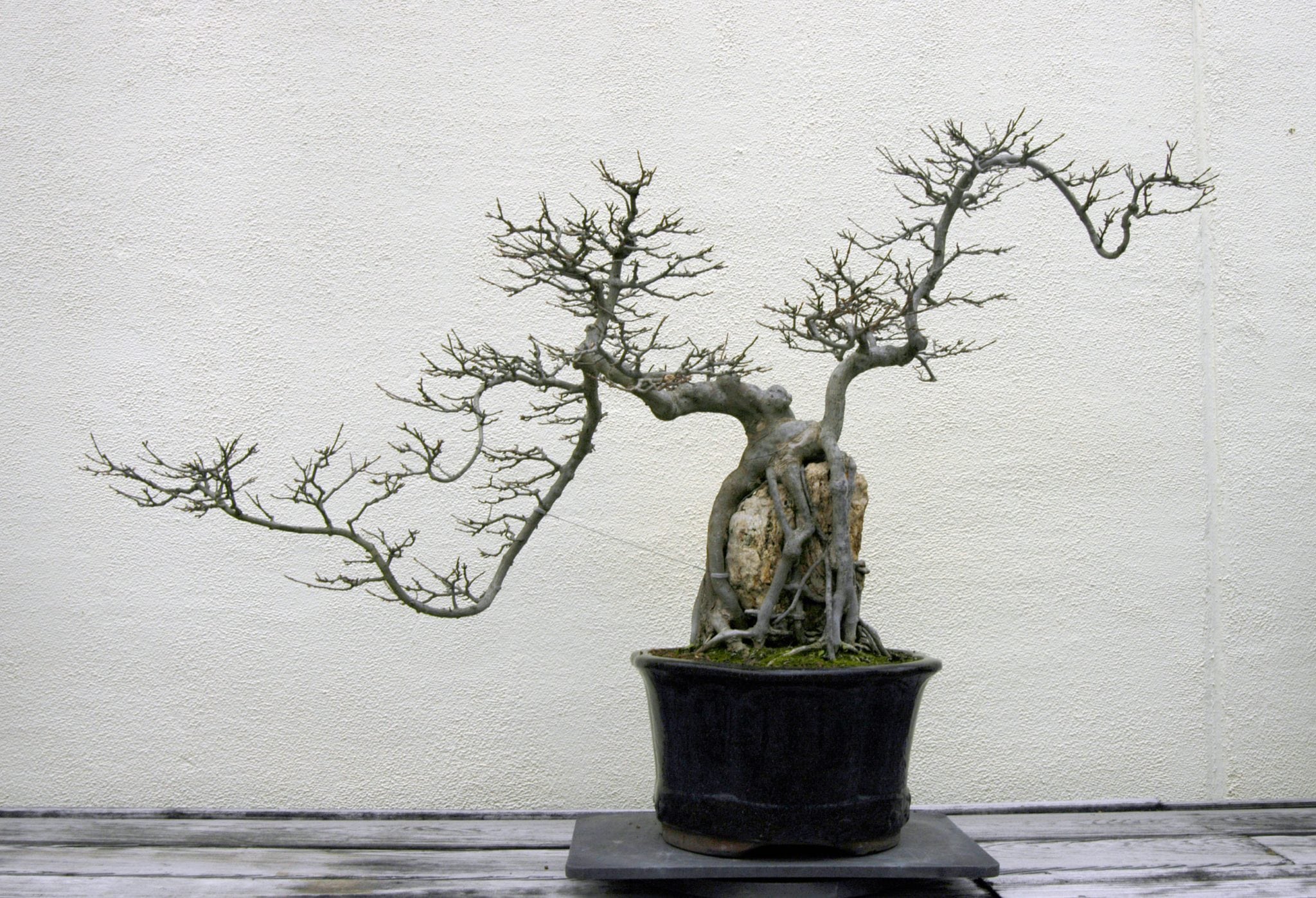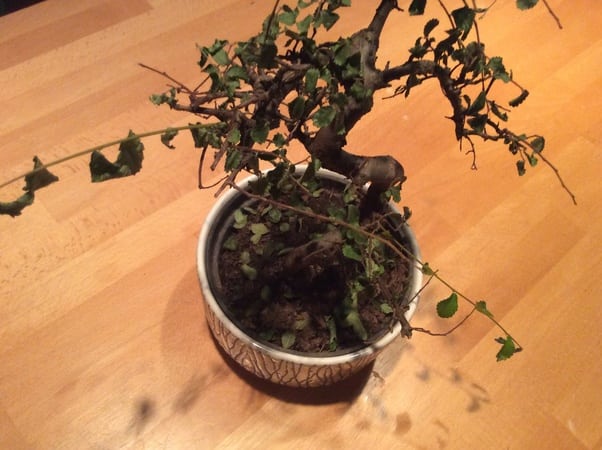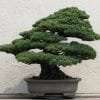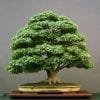
Even an experienced gardener will tell you that bonsai trees can be very difficult to care for. Bonsai are prone to many kinds of problems that plague a regular tree and at the same time susceptible to conditions that affect bonsai species. Depending on the type of free, bonsai can be delicate and need special attention.
If you are new to growing bonsai, you must first understand how a regular counterpart grows because it is very likely that these conditions will also affect a miniaturized tree. And aside from learning the different skills of cultivating bonsai, you must also possess patience in caring for bonsai trees. It could take many years to train and shape a bonsai tree but it can only take a second to kill one.

Things you need to follow this tutorial
- Bonsai plant
- A bonsai plant that is close to dying could present a variety of signs and symptoms. It is hard to say if a plant is deceased or may already be on the brink of death so the key is to be very observant. It could be easy to notice if a plant is near death when you observe pests or molds on the leaves and stems, wilting or discolored leaves, falling leaves and other definite symptoms.
- Bonsai Pot
- You need the right kind of pot to grow your bonsai. Traditional pots are usually plain, may be wide with a circular or rectangular shape. But no matter how deep or shallow or what kind of shape your pot is, it must have adequate drainage for excess water and fertilizer to drain from the roots.
- Bonsai potting soil
- Potting soil, especially for bonsai growing, is available from garden stores and bonsai nurseries. Potting soil for bonsai is usually soil that has good nutrient and water absorption properties because of the very small amount of pot space allotted for bonsai growing. Therefore you need good soil that can retain water and nutrients and drain the excess as well.
- Aggregates
- You need to improve drainage and aeration properties of your soil by using aggregates. These are small pieces of rocks and material that are placed at the bottom of the pot. These allow excess water to drain and will let oxygen enter the soil as well. You can purchase aggregate materials from local garden shops or from bonsai nurseries as well.
- Water
- You must have clean and safe water to use on your bonsai plants. You may use rainwater or tap water provided that this is clean water which won’t pose any risk to your delicate bonsai plants. If in doubt, have your water tested for quality and safety before using this on your bonsai.
- Balanced fertilizer
- Your sick or dying bonsai needs a balanced fertilizer to recuperate. Some trees require specific fertilizer formulas while some simply need regular, balanced fertilizer to grow. You can purchase this type of fertilizer from bonsai nurseries, garden shops, and garden centers.
- Sphagnum moss
- This is moss that will add more drainage to your soil. You can purchase this from local garden shops and from bonsai nurseries as well. The moss will protect the tree and keep it healthy as well.
- Pruning shears
- Pruning shears will help you prune and trim your bonsai carefully according to the style you wish to achieve. There are many types of pruning shears but no matter what, use clean or sanitized shears to prevent the spread of disease or molds from one area of the plant to another.
- Wire
- You need wire to position your bonsai accordingly. Wires come in different types but two are commonly used: aluminum and annealed copper. Aluminum wires are for bonsai with young and pliable branches while strong annealed copper is for larger and thicker branches and trunks. Wires are also available in a variety of gauges from as thin as 1 mm to 4 mm thick.
- Pliers
- You need a good pair of pliers to easily cut the wire to train bonsai and to remove wires after training is over. A good pair of pliers is also needed to work with tough roots, branches, and trunks.
Step by step instructions
1) Examine your bonsai tree carefully
You know your bonsai better than anyone else so you may have probably noticed something amiss. But despite being very particular about the different needs of your bonsai plants, there is a huge possibility that you may have missed something.
Check every leaf, stem, branch, bark, and root. Look for important signs that can help diagnose what ails your bonsai tree:
Fuzzy spots on leaves and stems
Small fuzzy white spots on leaves and stems are a sign of mold. Mold grows when conditions are right, usually in low humidity environments. Mold is serious and usually, plants can rapidly deteriorate when there is mold. Sometimes mold can grow unnoticed until these have completely invaded a branch or plumes of leaves.
Mold can also be passed on from one plant to another especially from a rogue plant. You may have brought home a plant that has been infested with mold and this has affected your poor bonsai tree. But regardless of where your plant got the mold, it is important to be diligent.
A small patch of white fuzz can grow to a large spot when you are not careful.
- The correct course of action depends on the type of tree you have. Consider the kind of tree, how to care for it and any important information about how to grow the tree. Only by understanding all these will you be able to correct mold growth.
- Most growers use alcohol to stop a small fuzz or a small mold growth. Simply place a small amount of alcohol on a cotton ball and dab it on the leaf or stem. Avoid spreading the mold by using a separate cotton ball on one leaf.
Remove the mold by using a scooping action on the fuzzy spot. Do not spread or wipe the alcohol.
- If you are nearing pruning or pinching your bonsai then, by all means, remove the affected leaf/leaves or stem.
- Improve humidity in your growing room. You can install a humidifier to improve humidity levels. You may also open windows and doors to quickly improve humidity.
The presence of insects or insect eggs
Any insect that you find lurking on leaves or stems means that there are more. The most common insects may be removed by using insecticides or pesticides but make sure that this is safe to use for indoor plants or bonsai trees. Some insects and pests have voracious appetites and can devour a single tree in one night! Therefore you must stand vigilant and remove insects, down to the very last egg.
- Use pesticides or insecticides. Be sure to use these according to the instructions provided by the manufacturer.
- Use “friendly” insects like ladybugs that will help you kill pests. Ladybugs and other insects that can kill pests will not destroy bonsai trees.
- Be careful in bringing new plants inside your growing area or in your garden. Before introducing new plants, quarantine your new plants and observe for any pests, mold or disease.
Yellowing of leaves, wilted or dry leaves

Yellowing of leaves and the presence of dry or wilted leaves may be due to a variety of conditions. The most common reason for yellowing of leaves is overwatering.
Usually, first-time bonsai growers may tend to overwater their plants because of being too diligent in caring for bonsai plants. Overwatering can also be due to poor drainage, using poorly draining soils and containers. There is still hope for bonsai with yellowing leaves and wilted leaves.
- Improve drainage of your soil quickly to save your bonsai tree. Re-pot the tree using well-draining soil.
- Use aggregates to improve soil drainage and aeration.
- Improve drainage by replanting in a well-draining pot. The pot should have at least two or more drainage holes to effectively remove excess water and nutrients.
Discoloration of leaves and stems
Any discolored leaves could be a sign of disease. Leaves that turn brown, dark green or light green colors could be due to disease or an imbalance of nutrients. You must be able to detect the kind of nutritional imbalance that afflicts your bonsai trees.
- Conduct a soil test to check for nutrient problems.
- Water your plants with distilled water to remove toxins, salts, and
- If possible, re-pot your bonsai to completely remove it from the toxic soil.
- Re-pot, use well-draining pots to remove excess water and nutrients.
- Let your plants rest for a while but keep it watered and the soil moist
- After re-potting your bonsai, keep a close eye for additional problems
- You may apply balanced fertilizer after your bonsai tree has completely recovered
Red spots on leaves
Red spots are signs of spider mites. Mites could be very dangerous to bonsai since this will devour your bonsai fast. Spider mites have flat bodies which can make webs. It can make webbing which can envelop leaves, stems, and branches. Spider mite infestation could become worse and even render any fruit or leaves of your bonsai useless.
- Remove spider mites as soon as you spot a small bug.
- Use a steady spray of water to remove the spider mite. Simply spray the insect with water to remove this one by one.
- You may also use a cotton ball with alcohol to dab on the mite to remove it.
- Use pesticide to kill mites. There are special fertilizer formulas that will kill pests but are gentle to bonsai trees. Follow instructions from manufacturers before using any pesticide or insecticide.
Shrunken branches
Shrunken branches can be due to poor nutrition or watering. Usually, smaller and shrunken trunks will simply wither and die. Sometimes shrunken branches may also be due to disease. There are a few options to save your bonsai tree.
- You may opt to remove the diseased branch to prevent any disease from affecting the entire tree. Use a sterile cutter or pruning scissors to remove the branch. Do not use the cutter to any part of the tree anymore; this can spread the disease that may have affected the branch.
- Conduct a soil test to check for any kind of nutrient problems.
- Water your plants using distilled water to remove toxins, salts and impurities fast.
- To completely remove the plant from the toxic soil, re-pot your bonsai.
- Re-pot the bonsai in well-draining pots to remove excess water and nutrients.
- Allow your plants to rest for a while but keep it watered and to keep the soil moist.
- After re-potting your bonsai, observe your bonsai for additional problems
- Feed your bonsai balanced fertilizer after it has completely recovered
2) Trim bonsai roots

The roots are where your bonsai drinks and feeds so it’s important to keep these healthy always. But if the tree is deceased, you need to make sure that the disease is not from the roots. Gently lift your bonsai tree from its pot. This should be very easy to do especially when you have re-potted your tree many times.
So lift the tree by holding on to the trunk firmly. As you lift it, place it on a flat surface that is clean and sanitary.
Now check the plant roots for signs of discoloration, rotting or any smell. If you spot any of these signs, cut the diseased part. Again, use sterile shears or cutter to remove the part. Dispose of the diseased part in a plastic bag. You may also burn the diseased root so that this will not affect any other bonsai plant or other plants in your garden.
3) Repot your bonsai

Brush away the loose dirt from the roots. Be on the lookout for any roots that are wilted, mushy, wet, or black. Healthy bonsai roots will be a color similar to the color of the trunk. Black roots are likely diseased.
As you remove diseased roots, make sure that you do not touch healthy roots with a blade that has cut infected roots. Doing so may spread the disease to other areas of the plant.
Use a new container for your bonsai tree. You need to do this because it is very likely that the old one is already contaminated with disease or pests. The pot must be clean and should be the ideal size for the bonsai. It should be approximately equal to the diameter of the tree’s trunk. Usually, you need to choose a new pot that is slightly larger than the old one to make way for the new roots to grow.
Before placing your bonsai tree in the pot, wipe the inside of the pot with a clean piece of cloth that has been dipped with alcohol. This will sanitize the container before you place the bonsai. Allow the pot to air dry completely before placing the bonsai in.
4) Use new soil in the pot and add moss

You need to place sphagnum moss on the bottom part of the pot; place moss to about a third of the depth. The moss will protect the tree from disease and in growing new roots. Gently place the bonsai tree in the pot, making sure the roots are well spaced and have adequate room to grow. This is why you need to use a larger and deeper pot for re-potting. Fill the remainder of the container with bonsai potting soil.
The exact mix of soil to use will depend on the type of tree you have. Usually, bonsai trees will grow in soil with low levels of phosphorus and nitrogen. A sandy loam soil would also be good for your plants. This is because this soil can absorb water and nutrients well and will drain excess water and nutrients too. Sandy loamy soil will aerate the soil and roots better too. It will let oxygen pass through the soil to be used up by the roots. Your bonsai will be able to recover faster when grown in this type of soil. Never re-use the soil that was inside the old container because this could be contaminated with insect eggs and bacteria.
5) Prune leaves and stems

Pruning has two important functions. First, it removes any infected or diseased parts of the tree. This gives the healthy parts of the tree a good chance to recover and become healthy. Second, it lets the plant to focus its energy on the growth of strong areas. Pruning may also improve access to sunlight and air circulation.
Check every leaf and stem for the disease. Use sterile cutters or pruning shears to remove any diseased leaves and stems. Make sure to cut all the diseased parts.
6) Place your bonsai in another location

You need to place your bonsai in another location to save it from any factor that causes disease. For instance, mold infestation in your garden or growing area could continue to affect your bonsai. It’s going to be useless if you just treat your plant and still allow it to remain in this contaminated area. Therefore, the best way to help your plant is to relocate it.
Be sure to choose a sunny spot in your garden or near a sunny window. A bonsai tree needs at least six hours of sunlight per day, and ideally eight. The location should also have good air circulation. The levels of humidity present in the new area should be moderate. Take note that too much or too little moisture in the air can cause health problems for bonsai trees.
Another factor that you must consider is the temperature of the new location. Moderately warm areas are the best to help your bonsai recuperate. Because you can provide balance in the growing environment, it is usually easiest to keep bonsai trees indoors where you have more control over its environment.
7) Water your bonsai tree

Be sure to use water that is room temperature to prevent shocking the plant. Give water until the soil is completely wet. You will know that the soil is completely wet when liquid flows out from the drainage holes. After this one time, water your soil daily.
Very important too that you water your bonsai tree only when the soil is dry and not when it is wet or when there is a pool of water that accumulates in the soil. The amount of water and the frequency of watering will also depend on the type of tree that you are growing so be sure to check this out.
Some species of bonsai trees will need to be misted daily for proper humidity. Use clean water in a mister or spray bottle. Apply water on the leaves and stems of the plants and also on the surface of the soil.
8) Apply fertilizer

Should you apply fertilizer to treat your plants? You need to wait till your bonsai has completely recovered before applying fertilizer. You must choose a balanced fertilizer appropriate for the type of tree you are growing.
Remember to follow the instructions included in the fertilizer product to prevent nutrient imbalances.
9) When to start training or continue training?
Suspend training your bonsai for now. You can continue wiring or manually manipulating your bonsai tree once it has completely recovered. It must not have signs of disease and any condition like pests, molds, wilting or discoloration.
Your tree must also be growing new leaves, stems, and branches before you start training or wiring. Wiring has to be done after it has been re-potting or pruning the bonsai roots.
Conclusion
A diseased or close to dying bonsai could be very stressful for any gardener but the key is to have the presence of mind so you can help your fragile bonsai tree to recover. You must first find out what’s ailing your tree and only when you have done this would you be able to solve your bonsai’s problems. You must act fast to save your bonsai from pests, molds, and diseases. With these techniques, you will be able to bring back your bonsai to good health.


